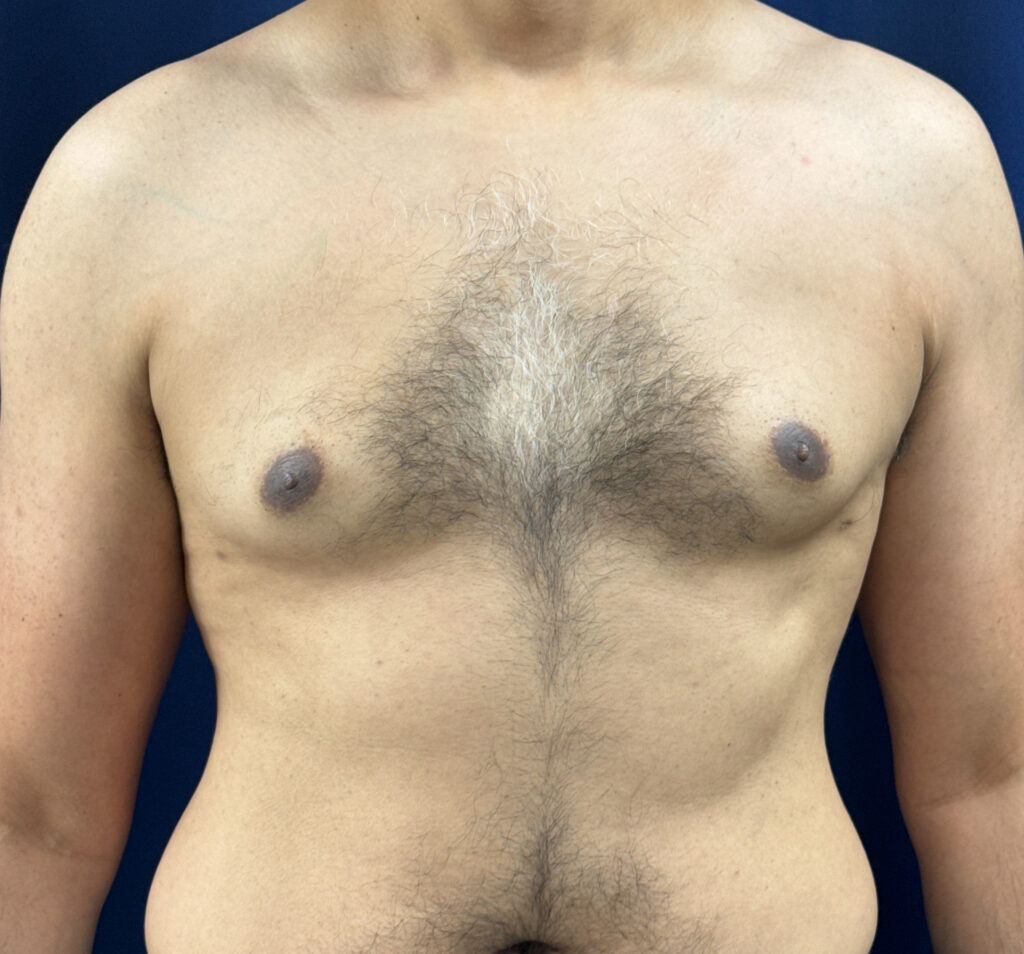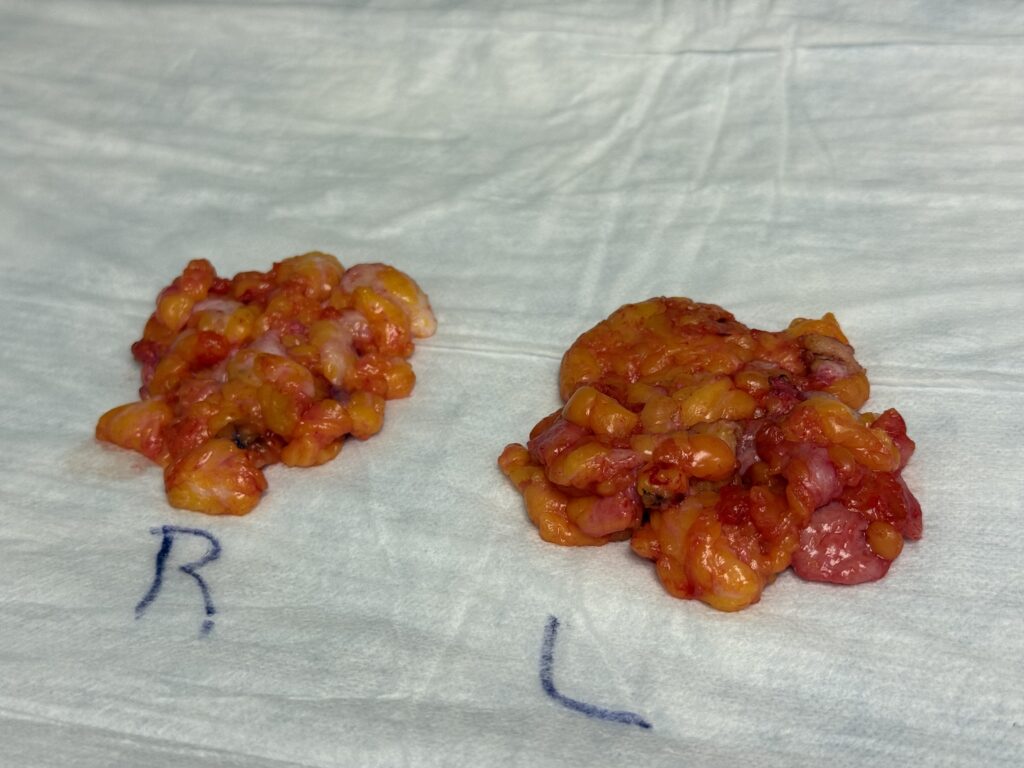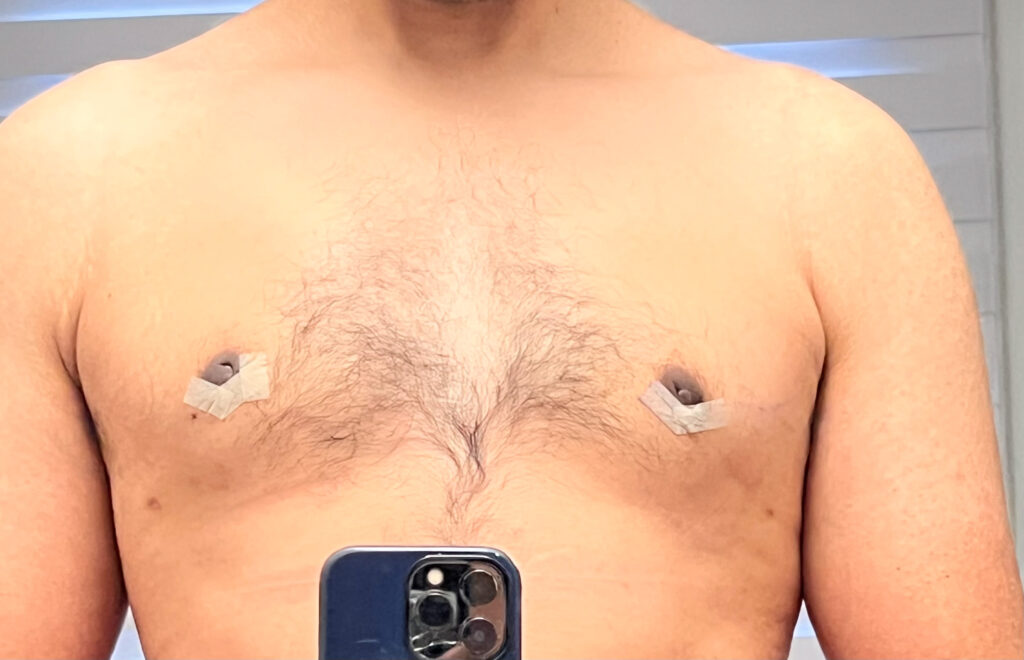
Note: Airsculpt® is a registered trademark of Airsculpt technologies, and I have no affiliation with that company and am expressing my medical opinion derived from treatment of my patients.
Case Example: Revision Gynecomastia Patient who came to me after first trying Airsculpt® 6 months Prior
This New York city patient was disappointed with his surgical results that did not remove the gland material. He came to me for corrective surgery (the outcome of the surgery is at end of article)

One procedure often marketed for fat removal is AirSculpt®, a branded treatment that uses small cannulas and power-assisted motion to extract fat with minimal downtime. While AirSculpt can be effective for some areas of body contouring, it is generally not the ideal choice for gynecomastia.
A common misconception is that gynecomastia is simply “chest fat.” In reality, most true cases involve a combination of fatty tissue and firm glandular tissue beneath the nipple-areola complex.
AirSculpt is designed to remove fat, but it does not appear to adequately remove dense glandular tissue. If the gland is not removed, the chest may still look puffy, and the contour will not appear truly flat or masculine — even if fat is suctioned away.
Effective gynecomastia surgery typically combines liposuction for fat reduction with a direct excision of glandular tissue through a small, well-hidden incision along the areola. This step requires skill, surgical training, and the ability to work carefully in delicate tissue planes.
Patients who undergo fat removal alone for gynecomastia often find that:
Correcting incomplete results is more difficult than doing the right procedure from the start.
In my opinion, AirSculpt® is heavily marketed as a high-tech, minimally invasive alternative to traditional surgery. While this may appeal to men who want quick recovery and minimal downtime, it’s important to remember:
For lasting, natural-looking results, the gold standard remains male breast reduction surgery involving:
This approach addresses both components of gynecomastia, minimizes recurrence, and provides the most masculine chest contour possible.
I scheduled him for revision surgery. We did this under local anesthesia. At times, it was painful for him because the numbing could not spread as well with all the scar tissue, but we added more numbing and got thru it.
Here’s What I removed (residual stuff not removed at inital surgery):

And, after doing the corrective Surgery, here are his results at the one week mark. Note the lateral chest scar is from his inital surgery, not mine. My incisions are still hidden by tape.

Final Takeaway
Gynecomastia is not just about fat. Without removing glandular tissue, the problem usually persists — leading to disappointment and, often, the need for corrective surgery.